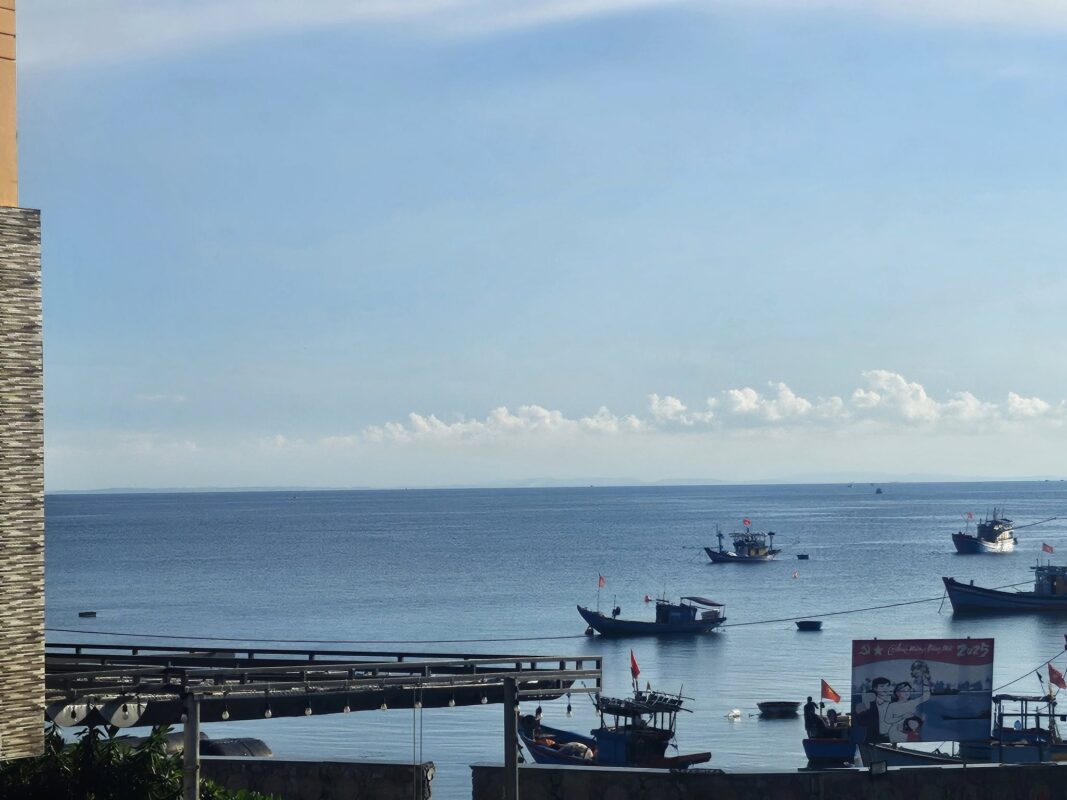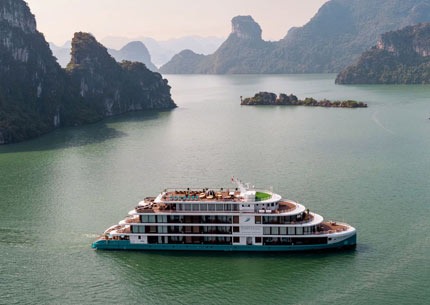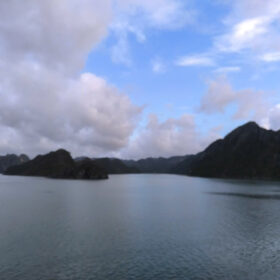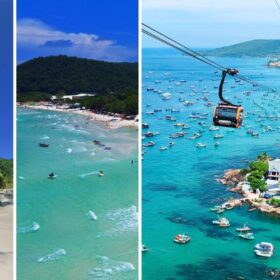Phu Quoc Island Typhoon Season 2025: 17 Essential Tips for Travelers to Stay Safe
Planning a trip to Vietnam’s pearl island? Understanding Phu Quoc’s typhoon patterns could make or break your vacation experience in 2025. This comprehensive guide covers everything from monthly weather forecasts to expert safety recommendations, helping you navigate Vietnam’s most popular island destination even during challenging weather conditions.

Understanding Phu Quoc’s Geographical Advantage in Typhoon Season
Nestled in the Gulf of Thailand just 45 kilometers from Vietnam’s mainland, Phu Quoc Island enjoys a relatively privileged position when it comes to typhoons. Unlike destinations in central and northern Vietnam such as Halong Bay, which experience direct typhoon impacts, Phu Quoc benefits from geographical protection that shields it from the most severe storms.
The island’s location in Vietnam’s southwestern waters provides a natural buffer against many typhoons that form in the South China Sea. While tropical depressions and heavy rainfall certainly affect the island, full-strength typhoons rarely make direct landfall here, making it a safer alternative during Vietnam’s stormy months compared to other coastal destinations.
This geographical advantage doesn’t mean visitors should disregard weather considerations entirely, but it does explain why many experienced travelers still choose Phu Quoc even during the technical “typhoon season” — the island offers more predictable conditions than other parts of Vietnam’s extensive coastline.
When Exactly Is Phu Quoc Island Typhoon Season in 2025?
The typhoon and rainy season in Phu Quoc spans from May through November, with the most significant weather events typically concentrated between July and September. For 2025, meteorological forecasts predict:
- Early Season (May-June): Gradually increasing rainfall with occasional tropical depressions
- Peak Season (July-September): Heaviest rainfall (averaging 300-400mm per month) with 2-3 potential tropical storms directly or indirectly affecting Phu Quoc waters
- Late Season (October-November): Decreasing rainfall with occasional storms possible through October
According to the Vietnam Meteorological and Hydrological Administration’s 2025 forecasts, the island can expect approximately 10-12 tropical weather systems in the West Sea region, with wind speeds potentially reaching 45-60 km/h during the most intense periods.
What sets 2025 apart from previous years is the prediction of slightly more intense rainfall in August due to strengthening La Niña conditions, making this particular month the most challenging for visitors planning beach-focused activities.
Month-by-Month Weather Breakdown for Phu Quoc in 2025
Understanding the nuances of each month’s weather patterns will help you make informed decisions about when to visit. Here’s a detailed forecast for 2025:
January-February: Perfect Beach Weather
- Temperature: 25-27°C (77-80°F)
- Rainfall: Minimal (20-30mm monthly)
- Sea Conditions: Calm with excellent visibility (15-20m underwater)
- Humidity: Comfortable 70-75%
- Sunshine Hours: 8-10 hours daily
January and February represent Phu Quoc’s prime tourist season with consistently sunny days, minimal rainfall, and ideal conditions for all beach and water activities. Hotel occupancy reaches 85-90%, and prices peak during this period.
March-April: Transition to Warmer Weather
- Temperature: 28-30°C (82-86°F)
- Rainfall: Increasing slightly (50-80mm monthly)
- Sea Conditions: Generally calm with occasional afternoon wind
- Humidity: Rising to 75-80%
- Sunshine Hours: 7-9 hours daily
These months maintain excellent beach conditions while seeing fewer tourists after the peak season. April marks the beginning of increasing temperatures and humidity, with occasional brief afternoon showers.
May-June: Early Rainy Season
- Temperature: 29-31°C (84-88°F)
- Rainfall: Significant increase (150-250mm monthly)
- Sea Conditions: Periods of rougher water, especially in the afternoons
- Humidity: High at 80-85%
- Sunshine Hours: 5-7 hours daily (interspersed with rain)
May signals the start of the rainy season, with more frequent afternoon downpours. June sees the pattern intensify with heavier, more consistent rainfall, though mornings often remain sunny. Water activities become more weather-dependent.
July-September: Peak Typhoon Season
- Temperature: 27-29°C (81-84°F)
- Rainfall: Maximum (300-400mm monthly)
- Sea Conditions: Frequently rough with reduced visibility
- Humidity: Very high at 85-90%
- Sunshine Hours: 3-5 hours daily (inconsistent)
These months represent Phu Quoc’s wettest period, with daily rainfall common and the highest chance of tropical storms. August 2025 is predicted to be particularly wet, with potential for 2-3 days of continuous rainfall during peak storm periods. Ferry services to the mainland can face frequent cancellations (up to 30% of scheduled departures).
October: Late Rainy Season
- Temperature: 27-28°C (81-82°F)
- Rainfall: Decreasing (150-200mm)
- Sea Conditions: Gradually improving
- Humidity: Remains high at 80-85%
- Sunshine Hours: 5-7 hours daily (becoming more consistent)
October marks the transition toward drier weather, though significant rainfall remains possible. The last tropical depressions of the season may affect the island, but conditions generally improve throughout the month.
November-December: Return to Dry Season
- Temperature: 26-27°C (79-81°F)
- Rainfall: Minimal (30-60mm)
- Sea Conditions: Increasingly calm
- Humidity: Decreasing to 75-80%
- Sunshine Hours: 7-9 hours daily
By November, Phu Quoc returns to predominantly dry conditions, with December marking the return of peak tourist season. Water clarity improves dramatically, making these months ideal for snorkeling and diving activities.
17 Essential Safety Tips for Visiting During Typhoon Season
If your travel dates coincide with Phu Quoc’s typhoon season, these specific strategies will help maximize safety and enjoyment:
Before Your Trip
- Purchase comprehensive travel insurance that explicitly covers weather-related cancellations and medical emergencies (approximately $50-100 for a week-long trip)
- Book accommodations on higher ground, particularly in the Long Beach (Bãi Trường) area, which has better drainage systems than more remote beaches
- Download reliable weather apps like Windy, AccuWeather, and the official Vietnam Hydrometeorological Administration app for real-time alerts
- Choose hotels with generators as power outages can last 3-5 hours during severe storms (most 4-5 star properties have backup power)
- Plan flexible activities that can be rearranged if weather disrupts original plans
During Your Stay
- Monitor local weather announcements daily—most hotels post weather updates in lobbies and restaurants
- Avoid remote beaches during stormy periods—stick to monitored beaches where warning flags are used
- Never swim when red flags are posted or during rainfall, as water quality and currents can change rapidly
- Maintain a 3-day supply of bottled water (approximately 6 liters per person) in case of temporary disruptions
- Keep electronics charged and carry a fully-charged power bank (10,000+ mAh recommended)
- Respect all official weather warnings—if authorities recommend staying indoors, do so without exception
- Book tours through reputable companies that prioritize safety and offer full refunds for weather cancellations
- Consider travel by air rather than ferry during peak typhoon months, as flights are less frequently canceled than sea transportation
Emergency Preparedness
- Save emergency contacts: Phu Quoc General Hospital (+84 297 3846074), Phu Quoc Police (+84 297 3846053), and your country’s consulate in Vietnam
- Identify your hotel’s emergency procedures upon check-in, including evacuation routes and assembly points
- Keep prescription medications and important documents in waterproof containers
- Register with your embassy’s traveler program if available for emergency notifications
How Typhoon Season Affects Different Parts of Phu Quoc
The impact of the rainy season varies significantly across Phu Quoc’s 574 square kilometers. Understanding these regional differences can help you choose the right base for your stay:
Western Coast (Bãi Trường/Long Beach, Bãi Ông Lang)
- Rainfall Impact: Moderate, with quicker drainage due to developed infrastructure
- Flooding Risk: Low to moderate, mainly affecting beach roads
- Activity Disruption: Restaurants and bars remain open even during heavy rain
- Accommodation Advantage: Higher concentration of properties with indoor facilities
The western coast, home to most of Phu Quoc’s tourism infrastructure, handles rainy season relatively well. Long Beach in particular benefits from significant investment in drainage systems and paved roads that minimize flooding issues.
Northern Coast (Gành Dầu, Bãi Thơm)
- Rainfall Impact: Higher precipitation than other regions
- Flooding Risk: Moderate to high on access roads
- Activity Disruption: Significant for boat tours and fishing activities
- Accommodation Advantage: More secluded, with fewer tourists during rainy periods
The northern tip of Phu Quoc receives some of the island’s heaviest rainfall, with certain roads becoming difficult to navigate during peak rainy season. The underdeveloped nature of this region means weather impacts are felt more keenly.
Eastern Coast (Hàm Ninh, Bãi Sao)
- Rainfall Impact: Moderate, but with longer-lasting effects
- Flooding Risk: Moderate, especially near Hàm Ninh fishing village
- Activity Disruption: Beach activities frequently affected
- Accommodation Advantage: More traditional experiences and better prices during rainy season
The eastern coastline, including the popular Bãi Sao (Star Beach), can experience significant changes in water clarity during the rainy season. The normally crystal-clear waters can become murky for 1-2 days following heavy rainfall.
Southern Region (An Thới, Hòn Thơm)
- Rainfall Impact: Slightly lower rainfall than northern areas
- Flooding Risk: Low to moderate
- Activity Disruption: Cable car to Hòn Thơm may suspend operations during high winds
- Accommodation Advantage: Newer resorts with better weather contingency facilities
The southern region, including the An Thới archipelago, generally fares better during rainy season than the northern parts of Phu Quoc. However, boat trips to smaller islands become highly unpredictable, with cancellation rates of up to 60% during July-August.
Comparing High and Low Season: Is the Typhoon Season Worth It?
Making the decision to visit during typhoon season involves weighing several factors beyond just weather. Here’s a comprehensive comparison to help you decide:
High Season Advantages (November-April)
- Weather Reliability: 80-90% sunny days
- Activity Availability: All tours and excursions operating normally
- Water Clarity: Excellent for snorkeling and diving (visibility 15-20m)
- Island Access: Regular boat services to surrounding islands
High Season Disadvantages
- Cost: 30-50% higher accommodation rates
- Crowds: Popular beaches at 70-80% capacity
- Environmental Impact: Higher tourist numbers affecting natural areas
- Authentic Experience: More commercialized atmosphere
Typhoon Season Advantages (May-October)
- Cost Savings: 30-40% lower prices on accommodations and tours
- Fewer Tourists: More peaceful experience with beaches at 20-30% capacity
- Lush Landscapes: Vibrant green scenery and flowing waterfalls
- Authenticity: Better opportunity to experience local life without tourist crowds
Typhoon Season Disadvantages
- Weather Unpredictability: Only 40-60% sunny days
- Activity Limitations: Up to 50% of water-based tours may cancel during peak rainy periods
- Mobility Challenges: Occasional flooding affecting transportation
- Humidity Discomfort: Consistently high humidity levels (80-90%)
The value proposition of visiting during typhoon season comes down to priorities: travelers seeking reliable sunshine and maximum activity options should visit during high season, while budget-conscious travelers comfortable with flexibility and occasional rainy days can enjoy significant benefits during the low season.
10 Spectacular Indoor Activities for Rainy Days in Phu Quoc
When tropical downpours interrupt beach plans, these indoor alternatives provide authentic and memorable experiences:
1. Phu Quoc Prison Historical Museum
Located in the south of the island, this former colonial prison offers powerful insights into Vietnam’s history. The museum spans 40 hectares with well-preserved exhibits that remain fully accessible regardless of weather conditions.
2. Sim Wine Tasting Experience
Unique to Phu Quoc, sim wine is made from the island’s native rose myrtle berries. Several production facilities offer guided tastings and production tours, including the Sim Wine Factory in Dương Đông, where you can sample up to 8 varieties.
3. Pearl Farm Tours
Phu Quoc is renowned for its pearl cultivation. The Ngoc Hien Pearl Farm provides fascinating 90-minute tours showing the complete pearl production process, from oyster cultivation to final jewelry creation, entirely under covered facilities.
4. Vietnamese Cooking Classes
Several resorts and dedicated cooking schools offer hands-on classes teaching traditional Vietnamese and Phu Quoc specialties. The Ham Ninh Cooking School’s 4-hour program includes market tours, cooking techniques, and dining on your creations ($35-45 per person).
5. Fish Sauce Factory Tours
As Vietnam’s premier fish sauce (nước mắm) production center, Phu Quoc offers behind-the-scenes looks at this essential condiment’s creation. The Phung Hung Fish Sauce Factory tour explains the 12-24 month fermentation process and includes product sampling.
6. Pepper Farm Experiences
Phu Quoc’s pepper is considered among Vietnam’s finest. The Khu Tượng Pepper Farm offers covered tours of their plantations, explaining cultivation techniques and finishing with peppercorn tasting sessions featuring different varieties.
7. Coi Nguon Museum
This privately-owned museum houses over 5,000 artifacts depicting Phu Quoc’s cultural and natural history, including extensive marine exhibits, archaeological findings, and cultural displays from the island’s diverse communities.
8. Vietnamese Coffee Workshops
Specialty coffee shops like Winston’s Coffee in Dương Đông offer interactive 2-hour workshops on Vietnamese coffee culture, brewing techniques, and tasting sessions featuring beans from different Vietnamese regions ($15-20 per person).
9. Spa and Wellness Retreats
Phu Quoc’s luxury resorts offer extensive spa facilities perfect for rainy days. Standouts include Fusion Resort’s “all-spa inclusive” packages and JW Marriott’s Spa by JW, featuring treatments incorporating local ingredients like pepper, honey, and aloe.
10. Night Markets Under Cover
Both the Dinh Cau Night Market and Phu Quoc Night Market operate regardless of weather, with covered sections ensuring shopping and dining can continue during rainfall. These markets typically open from 5 PM to midnight, offering perfect evening activities when daytime plans get washed out.
Comparing Phu Quoc to Other Vietnamese Destinations During Typhoon Season
If you’re considering a Vietnam trip during the typical typhoon months, it’s worth understanding how Phu Quoc compares to other popular destinations:
Phu Quoc vs. Halong Bay
Halong Bay experiences its typhoon season from June through September, with a higher frequency of direct typhoon impacts than Phu Quoc. For travelers seeking Vietnam’s famous seascapes during these months, Phu Quoc generally offers more reliable conditions.
For those determined to experience the iconic limestone karsts of northern Vietnam while minimizing weather risks, consider the 3-day Halong Bay and Ninh Binh combined tour, which provides inland alternatives when bay cruises might be canceled.
Phu Quoc vs. Nha Trang
Nha Trang’s rainy season (September-December) differs from Phu Quoc’s, creating an opportunity for beach-focused travelers to visit Phu Quoc during Nha Trang’s wettest months and vice versa. Nha Trang typically experiences more direct typhoon threats when they do occur.
Phu Quoc vs. Lan Ha Bay
Lan Ha Bay, adjacent to Halong Bay, shares similar weather patterns with its more famous neighbor. Travelers hoping to experience these spectacular northern seascapes while minimizing typhoon disruption should consider the 3-day 5-star Lan Ha Bay and Halong Bay cruise, which offers protected bay sections that can sometimes operate even when weather affects the more exposed areas.
Phu Quoc vs. Con Dao Islands
Con Dao’s rainy season (May-October) coincides with Phu Quoc’s, but its location in the East Sea makes it more vulnerable to direct typhoon impacts. Between these two island destinations, Phu Quoc generally offers more predictable conditions during typhoon season.
Essential Packing List for Phu Quoc Typhoon Season
Beyond standard vacation items, these specific additions will prepare you for Phu Quoc’s rainy season challenges:
Clothing and Footwear
- Lightweight, quick-dry clothing (synthetic materials like nylon/polyester)
- 2-3 sets of clothes more than you’d normally pack
- Waterproof jacket or poncho (compact, packable styles work best)
- Waterproof footwear that drains well (rubber sandals or water shoes)
- Extra pairs of socks to combat persistent humidity
Electronics and Communications
- Waterproof phone case (rated IPX8 or better)
- Dry bags in various sizes (5L, 10L, 20L)
- Portable battery pack (minimum 10,000mAh)
- International adapter with surge protection
Health and Safety
- Mosquito repellent (DEET-based, 30%+ concentration)
- Water purification tablets or portable filter
- First aid kit including rehydration salts
- Anti-fungal powder or spray (for humid conditions)
- Motion sickness medication (for potentially rough ferry crossings)
Comfort and Convenience
- Quick-dry microfiber towel
- Dehumidifying bags for luggage
- Waterproof backpack cover
- Collapsible umbrella (wind-resistant design)
- Zip-lock bags in various sizes for electronics and documents
Conclusion: Making an Informed Decision About Phu Quoc in Typhoon Season
Phu Quoc during typhoon season presents both challenges and unique opportunities. The island’s geographical positioning shields it from the worst typhoon impacts that affect other parts of Vietnam, making it a relatively safer choice for wet-season travel.
For budget-conscious travelers willing to embrace some flexibility, the significant cost savings and reduced crowds during May-October can create a more authentic, less commercialized experience of this tropical paradise. The lush landscapes and vibrant green scenery that emerge during the rainy months offer a different—but equally beautiful—perspective on Phu Quoc’s natural environment.
However, travelers prioritizing consistent sunshine, water activities, and uninterrupted beach time should definitely opt for the November-April dry season, when Phu Quoc truly shines as a world-class beach destination.
Whichever season you choose, proper preparation and realistic expectations will ensure your Phu Quoc experience remains memorable for all the right reasons. And remember—even during the heart of typhoon season, Phu Quoc typically experiences rain in patterns rather than continuous downpours, with many days offering morning sunshine perfect for beach time before afternoon showers arrive.
By understanding the island’s weather patterns, preparing appropriately, and maintaining flexibility, a typhoon-season visit to Phu Quoc can reveal a side of this Vietnamese paradise that high-season visitors never experience.
Contact
- Hotline | WhatsApp: +84.978.358.422
- Phone | WhatsApp: +84.962.261.687
- Email: halongbayluxcruises@gmail.com
- vietnammarveltravel@gmail.com














